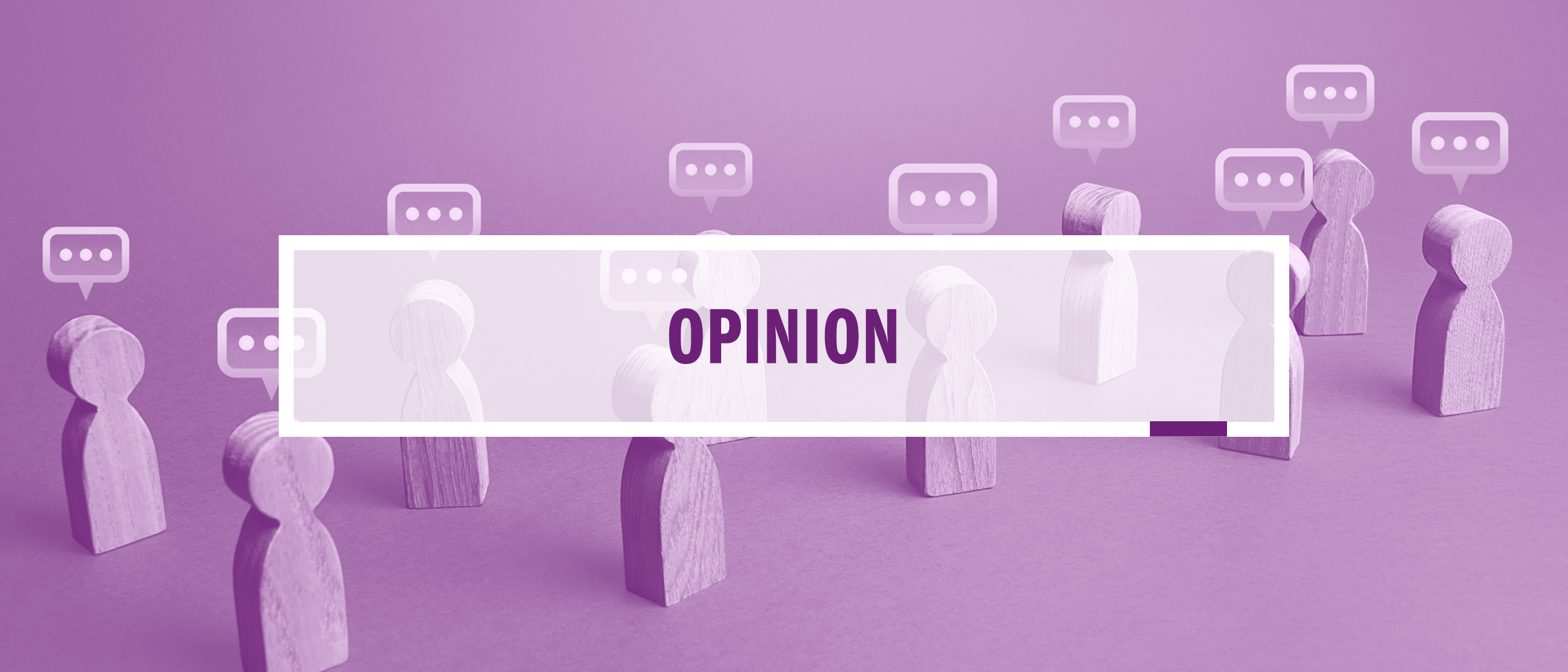News Team member Stephanie Oehler describes how the online "trad-wife" aesthetic fuels the flames of the anti-vaccination movement during the second-largest measles outbreak of the 21st century.
The disciplines are considered opposites — but projects in scientific illustration, movement therapy and theatre show how science is enriched by art.
By Gabrielle Stearns
In a small, intimate theater, a show is about to begin. The musicians pick up their instruments and the lights come up on an ensemble of doctors. On stage is a musical with singing, dancing, acrobatics, and comedy, but the star of the show isn’t an American founding father or a man haunting an opera house—it’s penicillin.
The Mold That Changed The World is a musical that recounts Alexander Fleming’s discovery of Penicillium notatum, a fungus that was purified into what we now know as the antibiotic penicillin. This show was created by Robin Hiley, CEO and Artistic Director of Charades Theater Company in Edinburgh, Scotland. Hiley was approached in 2016 by Dr. Meghan Perry, an infectious disease researcher with a crazy idea: to make a musical about the issue of antibiotic resistant bacteria.
Except it wasn’t that crazy of an idea. Artists are creators, storytellers, and collaborators. They take wild ideas and turn them into something entertaining and multidimensional. I am a dancer and health science writer, intimately familiar with this kind of interdisciplinary creative process in a world where art and science seem to exist on opposite ends of a spectrum. However, I have always been more interested in what happens when they interact, either as science-inspired art or art-based scientific research and communication. To put it in the language of science, this meeting of disciplines acts as a catalyst for new and creative work, much more interesting and useful than if they were kept separate.
When I heard about The Mold That Changed The World, I immediately recognized it as one of these projects that blurs the lines between science and art.
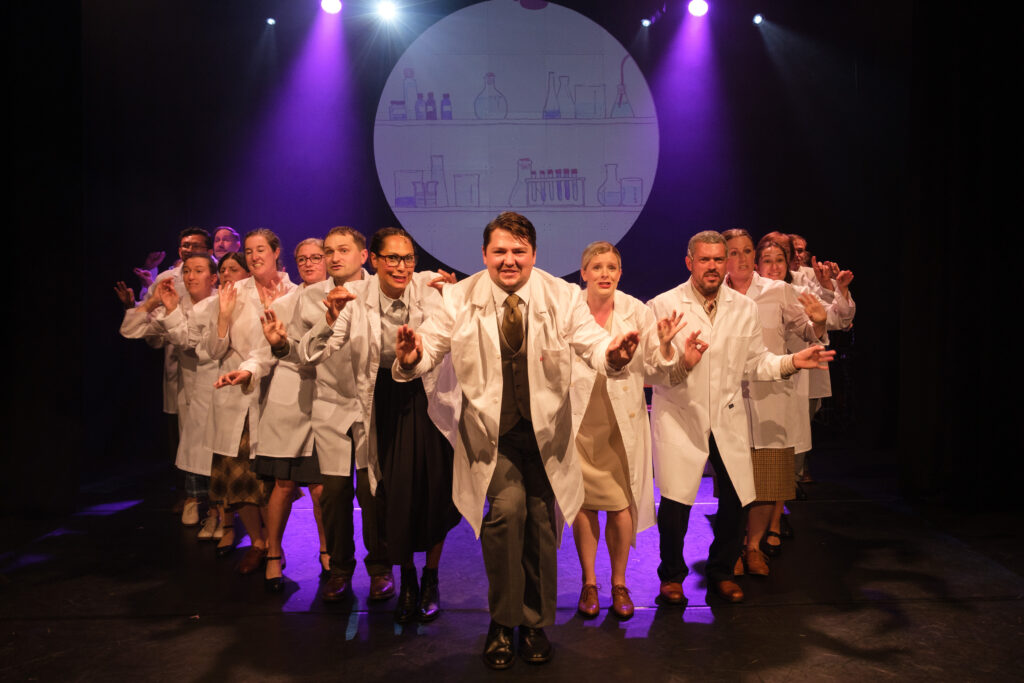
Robin Hiley: The birth of a musical
Hiley was the creative mastermind while Perry was the base of scientific knowledge. “Meghan (Perry) is a stickler for the details,” Hiley said. She focused on the facts while the creative team aimed to craft “a story arc that follows Fleming’s life that allos the audience to become emotionally invested and empathize with him.”
The musical started as a children’s show, with the aim of engaging kids with science through art. Charades Theater Company, under Hiley’s supervision, took the musical into schools, directing students to perform for their peers. The program was a success and began developing into something bigger.
“It got me really interested in Fleming’s story and amazed by the global issue of antimicrobial resistance,” Hiley said of developing the initial musical. Antibiotic resistance “is prevalent in all areas of society in a way that kind of just blew my mind,” he added. “Not just in clinical settings, but in agriculture and farming, in all sorts of places that you wouldn’t imagine.”
Antibiotic resistance, also sometimes referred to as antimicrobial resistance, occurs when bacteria adapt and mutate so that antibiotics, such as penicillin, become ineffective at stopping bacterial infections. Every time antibiotics are used, it offers an opportunity for these mutations to occur. Antibiotics dramatically changed the prognosis of bacterial infections when they were discovered in the 1940s, but antibiotic resistance is reversing that progress at an alarming speed. According to the Centers for Disease Control’s Antibiotic Resistance Threats in the United States, 2019 report, over 2.8 million cases of antibiotic-resistant infections are reported in the US each year, and they result in over 35,000 deaths.
The best way to stop the progression of antibiotic resistance is to reduce our reliance on antibiotics. One issue is overprescription, where doctors prescribe antibiotics to patients who have a viral or fungal infection instead of a bacterial infection. This means the drug will not be effective, but any harmless bacteria in the patient’s body has an opportunity to mutate and become resistant to the antibiotic.
Another issue is overusing antibiotics in livestock production. Shortly after antibiotics hit the mainstream, it was discovered that giving antibiotics to livestock, whether they were sick or healthy, would prevent bacterial infections and cause the animals to grow bigger. Again, this overuse offers an opportunity for harmless bacteria to interact with the antibiotics and mutate into a resistant strain. This agriculture practice has been reduced greatly in the United States over the last few decades as awareness of antibiotic resistance has increased, but has not disappeared entirely, and is still a common practice in many parts of the world.
Hiley’s musical tackled many of these issues at a level children could understand, but the creative team realized the show could have a wider reach and create better awareness if it were reworked for adults.
The next iteration of The Mold That Changed The World was made for a general audience rather than children. It starred professional West End actors and sold out a three-week run at the 2018 Edinburgh Fringe Festival. This fall, the show made its way to the United States, performing in D.C. in October and Atlanta in November.
Since the original children’s show, the musical has gotten longer, added characters, and reached a new level of depth and detail. The commitments to science education and community engagement remain strong.
The ensemble of children was replaced by an ensemble of healthcare professionals. When the show toured to the US, they put out a casting call for local “scientists and healthcare professionals who could sing.” Amateur performers auditioned and were selected for ensemble roles supporting the professional actors in lead roles. Here in Atlanta, those ensemble members came from places like the CDC and Grady Hospital.
“We thought that there was this great opportunity to involve people that actually are working with the problem,” said Hiley. Scientists and practitioners who deal with the consequences of antibiotic resistance get to use this musical as a platform to share their experience and the importance of their research.
Art like this isn’t just entertainment. It’s communication, education, community building, and storytelling. And it belongs in the world of science and healthcare.
Glendon Mellow: “Surreal scientific illustration” in #SCIART
A musical might seem like an odd window into the world of arts in health communications, but consider a form of art we see every day: images in news and media.
Glendon Mellow is a visual artist who has made a career out of creating, critiquing, and implementing images in science communication. His art spans everything from scientific illustrations to tattoos, often focusing on extinct organisms, fossils, and blending science with fiction and myth. The style is described by friends as “surreal scientific illustration” and “evo-punk.”
Mellow is also a blogger who writes about his creative process and best practices for choosing art to accompany scientific news and media. His writing and illustrations can be found at Symbiartic, a now-retired Scientific American blog about “the art of science and the science of art” that Mellow co-created with Kalliopi Monoyios and Katie McKissick, and at his own blog, The Flying Trilobite. Mellow is also the founder of the #SciArt Twitter community and a marketing manager for web and social at Red Nucleus, where he uses his social media skills to promote the team’s healthcare training animations.
It’s an impressive resume that uses his arts background to educate and communicate about the complexities of the natural world. Health and science fields tend to have an accessibility problem, which makes this kind of creative communication a necessity. Science affects everyone, not just those with the training to read and interpret scientific studies. Health communications and art work towards bridging this gap.
“Artwork is a shortcut to understanding,” Mellow explained. Good art draws viewers in, raising awareness and introducing them to new ideas and concepts. Then it presents those concepts using imagery and metaphor instead of written facts. It’s a supplement or alternative to traditional ways of educating, and a powerful one.
Consider Trinucleus ra, a digital art piece Mellow created in December 2021 for his blog, The Flying Trilobite.
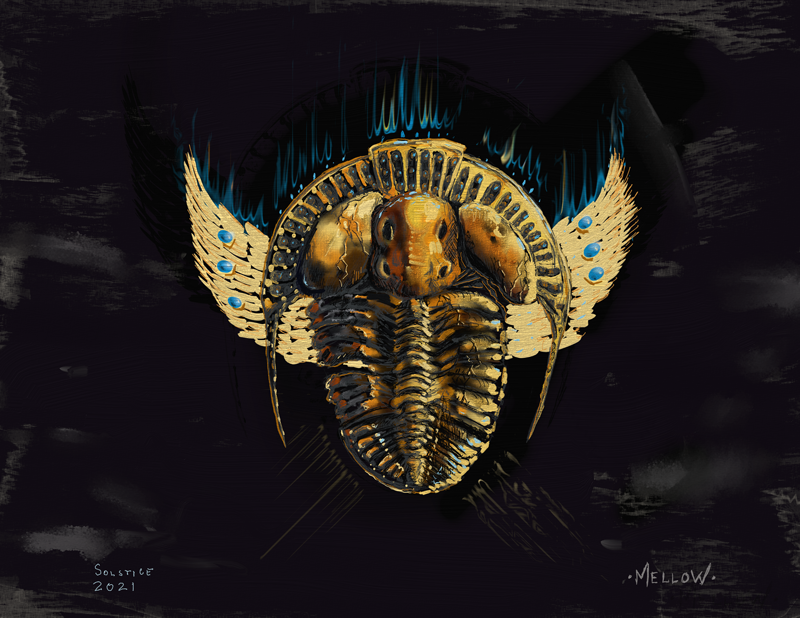
Mellow describes this piece in his blog as a “Scarab Trilobite.” It’s a fictional combination of a scarab beetle, an insect that was commonly depicted on amulets in Ancient Egypt, and a trilobite, a marine arthropod that has been extinct for over 250 million years and that we only know about from the fossil record. The feathered wings are Mellow’s own addition.
He envisioned this scarab “as an adornment on an Egyptian woman’s head,” despite the organisms and cultural contexts being so far removed from each other. Ancient Egyptians adorned both the living and the dead with scarab amulets, but had no way of knowing trilobites ever existed. Developments in archeology in the last few centuries gave Mellow the information he needed to create this work of art.
Science fiction artistic representations like Trinucleus ra aren’t just interesting to look at, they impact the way people think. It inspires a search for knowledge — I knew very little about scarabs and had never even heard of a trilobite before speaking with Mellow. It can also encourage us to consider where we are in the timeline of science, and where we could go.
“Good images can disturb, just like a good science fiction story can make somebody question the direction we’re headed in with technology or as a society,” Mellow explained.
Stacey Springs, PhD: Arts and science as an interdisciplinary team
Art is a natural complement to science and health communication, but it has value beyond conveying information. When artists are given a seat at the table in research and academia, they can reveal findings beyond what is discovered by scientists alone.
Stacey Springs, PhD, a research associate at Brown University who studies research methods and evidence synthesis, had no arts background or experience working with artists until a few years ago. She’s a health economist who develops new approaches to tackling complex public health issues.
“I was at Brown University, and physically outside of my window was [Rhode Island School of Design],” Springs said. She was asked to give a guest lecture to students about how to read and interpret scientific studies. The design students were tasked with redesigning a nursing home to address the problems staff and residents were experiencing. They approached logistic and medical issues from the perspective of artists.
“When I saw what they were doing, I felt so inadequate. They were really taking their diverse talents and trying to use this medical literature to do evidence informed work, but really meeting people where they were in creating solutions. I had such deep respect for what they were doing.”
Springs kept working with artists after this project. She recognized their potential to change the way we think about issues in public health. In 2016, the Rhode Island State Arts Council and the Department of Public Health invited her to join an advisory group of researchers, health practitioners, and artists to explore new approaches to addressing issues in public health. It was a rare project where artists worked with scientists as equal co-collaborators. Every member of the team had equal authority, no matter what field they came from.
In 2021, Springs wrote about her experience working with artists on this project for a special arts and health edition of the Society for Public Health Education (SOPHE) journal published in 2021. The paper, titled Artists on the Research Team: An Interdisciplinary Approach to Team Science, Research Rigor, and Creative Dialogue, is an examination of the benefits and challenges of including artists in scientific research.
The biggest benefit she saw was that these creative thinkers unlocked new evidence and information that Springs and her fellow science-trained academics didn’t see.
“I was always looking for the densities of evidence because I want to compare things,” she said. “But what the artists taught me was to look at the white space, the blank space, the voids, and figure out why there’s no evidence in those pockets.”
Artists look at these gaps through a lens of empathy, seeing people rather than data points. It revealed all kinds of disparities and differences in the individuals involved in research studies. “These folks have so much to teach us in research with regards to equity, diversity, inclusion, true belonging,” Springs said.
So much of public health is affected by social determinants, such as race, income, education, and zip code. It takes more than scientific knowledge to recognize these kinds of disparities. We need creative and empathetic thinkers to find these connections and use them to explore better solutions.
Madeleine Hackney, PhD: Bringing art into clinical research
One of those thinkers is Madeleine Hackney, PhD, a research scientist with the Center for Visual and Neurocognitive Rehabilitation at the Atlanta VA Hospital and Associate Professor in the Emory School of Medicine. She calls herself a gerontological neuro-kinesiologist, meaning she studies movement and mobility in older adults with neurological disorders. Essentially, she teaches people with Parkinson’s disease and Alzheimer’s disease to dance.
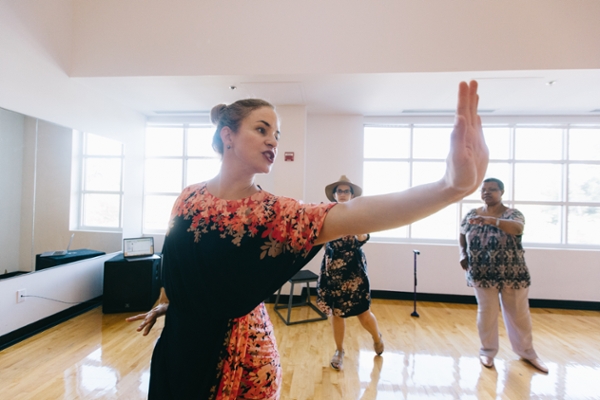
Hackney was a professional dancer before beginning her career in science. She graduated from New York University’s Tisch School of the Arts and spent 7 years performing in movies — including Mona Lisa Smile and Mad Hot Ballroom — musicals and television shows, and international ballroom dance performances.
When she changed gears to medicine, Hackney chose movement science because of her experience as a dancer.
“For chronic injuries, tendinitis and many others, you have to retrain your body to learn proper movement patterns again, and it starts up in the head. These are the things that amaze me,” she said.
Hackney’s research is focused on the ways dance can interact with neurology in older adults. She and her research team teach Argentine tango to patients with Parkinson’s disease or Alzheimer’s disease, along with their caretakers. They look at the ways partnered dancing can improve stability, decrease falls, and slow the progression of their diseases.
“It has been effective at improving balance, spatial cognition, and different variables that are a part of our mobility and our ability to get around,” she said of her published research. Her team is also beginning to look at how dancing can improve the efficacy of Parkinson’s medications and improve the mental health of caretakers.
It’s an incredibly promising field of research that would have never been discovered without an artist. Hackney’s unique background and perspective inspired this project, but the skills she developed from a professional dance career are what made her so successful.
We joked about the resilience we have each developed as dancers in such a competitive field. Rejection is always difficult, but as Hackney put it, “imagine if you were standing there in a leotard and tights and they said goodbye.”
The audition room prepares dancers well for accepting rejections for research grants or jobs in science, but the benefits of training as an artist go beyond developing a thick skin. “It’s not magic,” Hackney said. “I think that is one of the most important things you can convey about art. It’s about getting those techniques, getting the foundation, and then using them in creative ways to make something unique, something innovative, something that captures people’s imaginations, that strikes them as something worthy of looking at and gets them to think about stuff in different ways.”
Hackney’s research may be novel, but it’s not on the fringes of the science world. She has been published in numerous journals and speaks at conferences all over the world. Her artistic talents and perspectives have a clear place in the worlds of research and healthcare, and other artists are finding their space in the field as well.
Sophie Tenaglia: Music as therapy
The benefits of artistic training and the perspectives that go along with it reach beyond the lab and into clinical healthcare settings. I spoke with Sophie Tenaglia, a music therapist at a behavioral health hospital. She leads group therapy sessions for psychiatric patients, but this represents just one of many applications of the field.
Music therapy exists at the intersection of art and psychology. Practitioners use music to address the mental health and cognitive goals of patients. Treatments can include listening, talking, and creating music with a huge range of benefits. Music therapy has been used to treat Post Traumatic Stress Disorder, manage pain, and in a recent high-profile case, to help congresswoman Gabby Giffords regain speech after suffering a gunshot wound to the head. For Tenaglia, music therapy is a tool to build coping mechanisms for her patients and to provide alternate ways of processing emotions.
“My role is to take a look at the goals that they already have for themselves in the hospital and think about how we can use music to support them as they move toward those goals,” she explained. One of the focuses of her sessions is encouraging patients to get involved in creating the music. “Being actively involved in music making can help increase reality orientation if they’ve got a lot of psychosis going on, and help with self esteem or mood elevation.”
Music therapy can have effects beyond what we see with typical pharmaceutical interventions in psychiatry alone. Tenaglia’s patients are typically suffering from acute psychiatric issues, including psychosis and suicidality. For these people, music acts as a tether to reality or a reason to keep going. Combining the art of music with the science of psychology optimizes the benefits patients can receive and can be an integral part of treatment and recovery.
“One of the main things that I see is motivation and engagement,” Tenaglia says of her work, “It’s getting them out of their beds, not just sleeping the day away because they’re so depressed. Not just isolating from people, but actually engaging with others.”
Music therapists are clinical practitioners, but they also must be artists. Tenaglia played the French horn for years before starting her music therapy training but also studied piano, guitar, and drums to obtain her certification. This field, like Hackney’s research or Hiley’s musical, could not exist without skilled artists.
Combining science and the arts: Creating a bigger picture
Interdisciplinary work between scientists and artists is not without challenges, but the biggest problem seems to simply be that not enough people are talking about it. There is a clear lack of respect for artistic knowledge in academia and artists aren’t oblivious to it.
“They were very much diminishing the art role because they wanted to be seen as legitimate.” Springs told me about her experience working with artists in public health. I wasn’t surprised to hear this.
I am no stranger to the feeling that my artistic knowledge is not respected in science and research spaces. I have to advocate for the value of my art daily, but advocating is exhausting.
Sometimes, it feels easier to rely on my scientific knowledge and experience rather than risk my art being written off as a hobby. Springs reminded me of the importance of resisting this urge.
“Artists are very strong and have very deep praxis, theories, and ethics, except they don’t have a PhD. They were out practicing in the community while I was in classroom training,” she said. “That doesn’t diminish their deep commitment to praxis and deep commitment to community based learning.”
It felt empowering to hear someone entrenched in the world of academia advocating for my kind of research and practice. I felt the same when I attended an Atlanta performance of The Mold That Changed The World.
The week of performances were held at the Emory Science Gallery Atlanta at Pullman Yards. I was invited to attend an opening night celebration and performance hosted by the CDC Foundation.
The audience was filled with scientists, professors, doctors, donors, and every health worker in between. We sat together and had the collective experience of witnessing a musical like no other. Science was woven into song while dancers embodied the beauty researchers see when they discover something revolutionary in their petri dishes. There was laughter throughout and a standing ovation at the end. I listened to other audience members talk at intermission about how much they were learning about antibiotic resistance, or how they had teared up from seeing the topics they researched being presented with so much care and clarity.
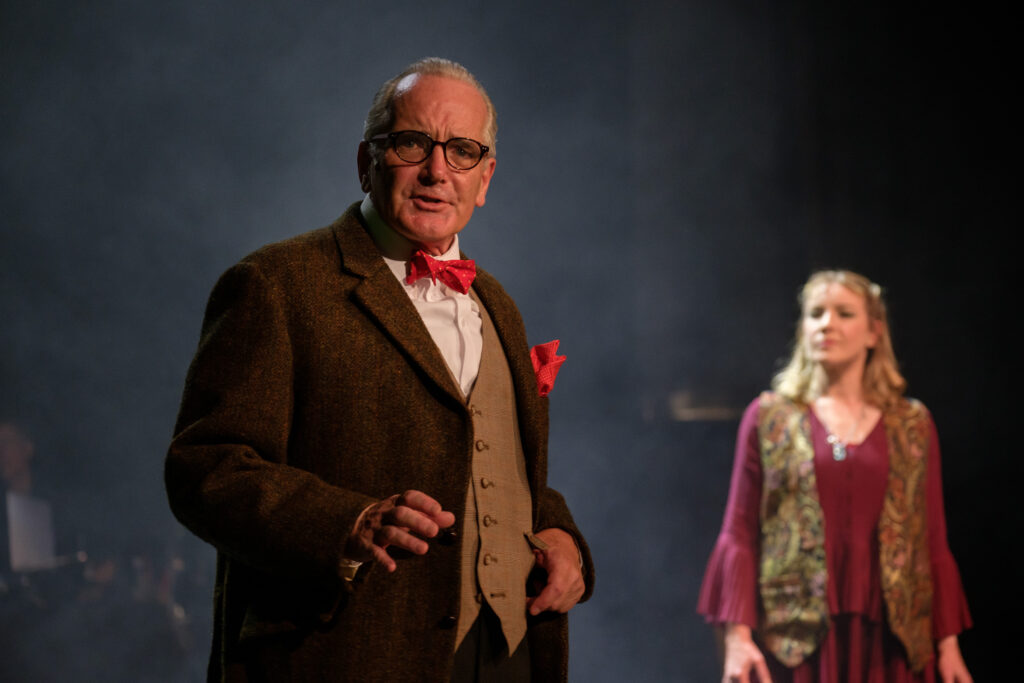
This is the power of art. It creates community, makes people feel seen, and challenges what they think they know.
When I spoke to Robin Hiley, I asked him why he thinks his musical about mold became so successful. His answer is the dream of any scientist who commits their career to research and any artist who produces work.
“It’s about entertaining people, and touching people, and getting them to empathize with a problem,” he said. “It’s about inspiring them to go away, read up about it, find out a bit more, and begin to comprehend how they fit into the bigger picture.”
Correction: The original version of this story described Mellow’s job responsibilities imprecisely. It has been updated.
